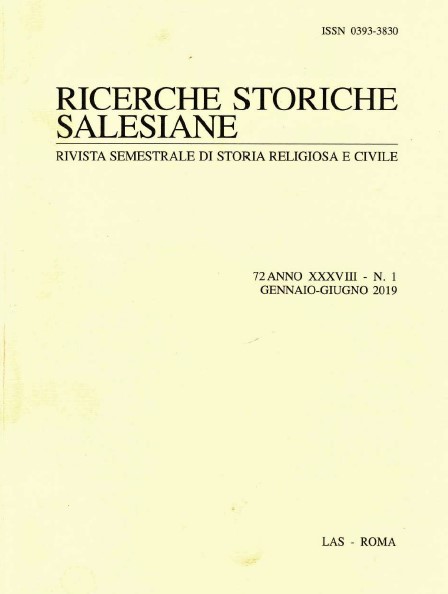Kristu Jyoti College, built and launched on its mission of theological formation of the Salesians in the whole of India, was envisioned and realized in a fast-changing post-colonial world which was throwing up daunting challenges for the Church and consecrated life in general and for the Salesian Congregation with its professed goal of catering to the young and the needy in particular and that at a time when newly independent India was seeking to find its place in the comity of nations.
The challenge before the nascent institution was nothing short of the arduous and it set about realizing its goal of forming Salesian priests suited for the times, drawing on the evident vibrancy in the Church and in the Congregation in the context of the Second Vatican Council and that of the 19th and 20th General Chapters of the Society of St. Francis de Sales. Thus, seen in perspective, Kristu Jyoti College, which would evolve a typical form of priestly formation adapted to the times and the context of India will also become, in effect, a point of departure.
Il Kristu Jyoti College, costruito e lanciato nella sua missione di formazione teologica dei salesiani in tutta l’India, è stato concepito e realizzato in un mondo post-coloniale in rapido cambiamento, che stava lanciando sfide scoraggianti per la Chiesa e la vita consacrata in generale e per la Congregazione Salesiana, con il suo obiettivo professato di servire i giovani e i bisognosi, in particolare in un momento in cui l’India, appena indipendente, stava cercando di trovare il suo posto nella comunità delle nazioni. La sfida davanti alla nascente istituzione era a dir poco ardua ed essa si accinse a realizzare il suo obiettivo di formare sacerdoti salesiani adatti ai tempi, attingendo all’evidente vivacità della Chiesa e della Congregazione nel contesto del Concilio Vaticano II e dei Capitoli Generali XIX e XX della Società di San Francesco di Sales. Così, visto in prospettiva, il Kristu Jyoti College, che evolverà una forma tipica di formazione sacerdotale adattata ai tempi e al contesto dell’India diventerà anche, in effetti, un punto di partenza.
Contents
- 1. A world in transition.
- 1.1. New political equations.
- 1.2. Economic and technological progress.
- 1.3. Social upsurges involving youth.
- 2. The Catholic Church.
- 3. The Indian Context.
- 3.1. Perception of the Catholic Church in Independent India.
- 3.2. Curbs on the entry and activities of foreign missionaries.
- 3.3. A significant meeting.
- 3.4. Salesian reading of the Indian situation – challenges and possibilities.
- 4. The Salesian Congregation.
- 4.1. Nineteenth General Chapter.
- 4.1.1. The Convocation.
- 4.1.2. A chapter in the context of the Second Vatican Council.
- 4.2. A new approach in a New World.
- 4.3. Endorsing modern trends.
- 4.4. Significant developments at the 19th General Chapter.
- 4.5. Some areas of special concern.
- 4.5.1. Boarding-schools.
- 4.5.2. Oratories and youth centres.
- 4.6. Climate of the chapter.
- 4.1. Nineteenth General Chapter.
- 5. Salesian Congregation between GC 19 and GC 20.
- 5.1. A period of crisis.
- 5.2. Initiatives of the Rector Major.
- 6. The Special General Chapter.
- 6.1. The more significant developments at the Chapter.
- 6.2. Some salient contextualized aspects.
- 6.2.1. Area of formation.
- 6.2.2. Evangelisation and dialogue.
- 6.2.3. Schools and oratories.
- 7. Kristu Jyoti College – a point of arrival.
- 7.1. A change in attitude of the Archbishop of Bangalore.
- 7.2. Renewed correspondence.
- 7.2.1. Letter of Fr. Med to Archbishop Pothacamury.
- 7.2.2. Letter of the Auxiliary Bishop to the Provincial.
- 7.2.3. Letter of Fr. Dabove to the Auxiliary Bishop.
- 7.2.4. Letter of the Provincial to the Auxiliary Bishop.
- 7.2.5. Auxiliary Bishop to Provincial.
- 7.2.6. Correspondence between Fr. Di Fiore and the Coadjutor Archbishop.
- 8. Laying the Foundation-Stone.
- 9. Construction.
- 9.1. Change of plan and the phased completion.
- 9.2. The ecclesial environment of the theologate.
- 9.2.1. St. Anthony’s Parish and St. Anne’s convent.
- 9.2.2. Lands at Basvanapura and Kowdanahally.
- 10. The immediate preparations.
- 11. Canonical erection and critical views.
- 11.1. Towards canonical erection.
- 11.2. Differences of views.
- 12. A new beginning in Bangalore.
- 13. Blessings and inaugurations.
- 13.1. “Unofficial inauguration”.
- 13.2. Visit by the General Councillor for formation.
- 13.3. Official inauguration – setting priorities.
- 13.3.1. Arrival of the Rector Major.
- 13.3.2. Welcoming the Rector Major.
- 13.3.3. Initial exhortations of the Rector Major.
- 13.3.4. Luncheon at the Archbishop’s House.
- 14. Blessing and official inaugural function.
- 15. Farewell to the Rector Major.
- 16. Completing the structure.
- 16.1. College chapel and the library.
- 16.2. College Auditorium.
Reference time period: 1967 – 2018
T. Anchukandam, Kristu Jyoti college, Bangalore: the history and significance of the opening of the first Salesian institution in the archdiocese of Bangalore – Part II, in «Ricerche storiche salesiane», 38 (2019), 1, 9-60.
Reference institution:
Istituto Storico Salesiano
